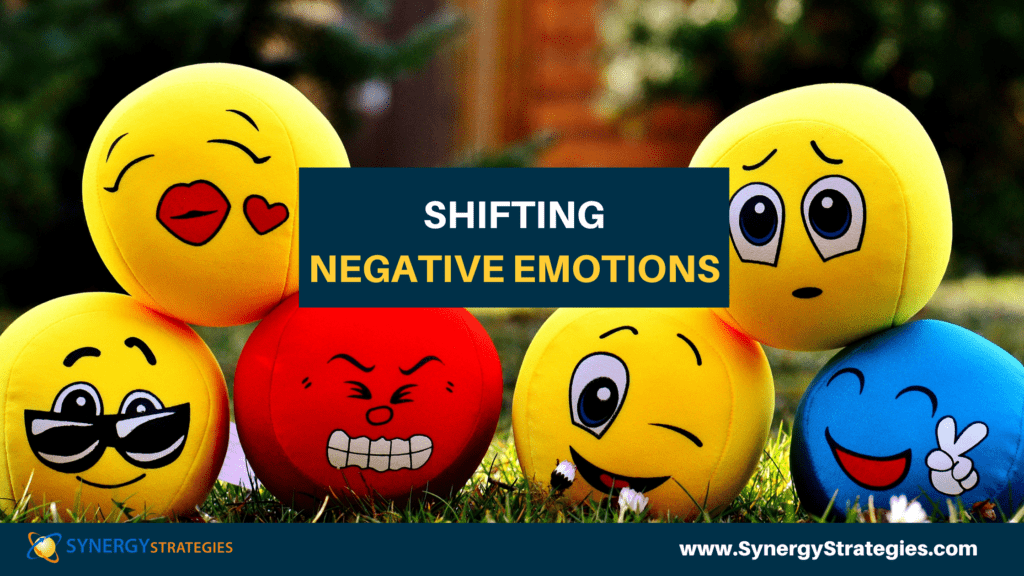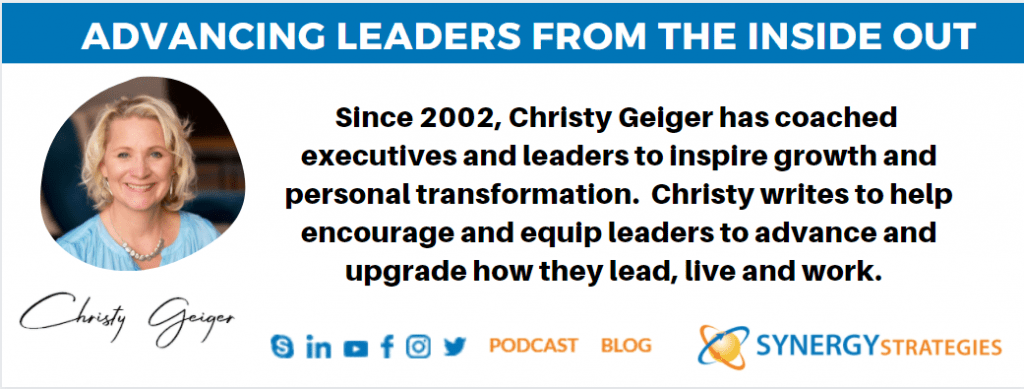Have you ever been having a great day and then a phone call, email, or something happens that shifts you into negative emotions, mood, or energy? Often people will say, “Just shake it off.” We feel ashamed and guilty to be “fixating” on something and struggling to “let it go” as if we should be able to snap out of it and move on, unaffected by our emotions.
While there is value in developing a thicker skin and not being hypersensitive, there is also value in not minimizing our feelings. A saying that I first heard at The Neuro Leadership Institute is “Name it to tame it.” This is speaking about our emotions and the need to NAME how we are feeling to stop the rush of the limbic emotional system that activates our amygdala and hijacks our fight, flight, or freeze response mode. We can try and convince ourselves that it’s not happening and tell our brains to stop thinking about it, but often that does not work. Trying to do that is like saying “I don’t want chocolate; I don’t want chocolate.” The more you say it the more you focus on it and therefore want it. The more you say, “Get over it”, the more you are focused on how you are stuck on it. To change your thought, you want to REPLACE it with other thinking.
Before you can REPLACE negative emotions, you have to NAME THEM.
You can do this in your mind, but I recommend journaling (handwriting is ideal). There is something more therapeutic and transformational when you write it out. When you only THINK about it, your brain can go down other rabbit trails (ie role-playing a conversation, making assumptions, building on the story, etc.) rather than staying focused on the emotions and situations you are trying to clear.
I like taking a regular size sheet of paper and making a large T grid (the crossbar at the top of the page with the bulk of writing space to the left and right of the vertical line).
- Top (TOPIC): At the top (above the T), write what this is about. i.e. “Meeting this AM and why it went bad and how I did not show up like the leader I want to be.”
- Left-Side(PRESENT): Next on the left side of the T, write what happened and what you are thinking and feeling.
- It can be useful to use a FEELINGS CHART if you tend to use the happy, sad, mad, tired, and 4 main emotions. Try and recognize what you are thinking and what feeling is connected to that and why. This is not about belaboring the point or drawing out stories. It is about naming WHAT HAPPENED and HOW I FEEL and WHY.
- Often when we are hijacked, we can be in a little more of a fixed mindset. We can feel a little more victimized by situations and downshift to our lower-letter self (or inner child) (meaning when I am in a positive place and forward-thinking I am my Capital “C” Christy versus when I am fighting negative mood and emotion, I can downshift to my lower “c” christy). It is not about being bad or wrong, but about recognizing where I am, how I am feeling, and what I am thinking. The more I can name and label how I am feeling, the more it naturalizes it, and I am able to shift back to my Capital “C” Christy self.
- Keep writing until you get it ALL OUT. Often, a sign follows once you have fully cleared your thoughts and emotions. An example might sound like this: “The meeting was not very productive. I was frustrated that everyone was prepared but it was difficult to get clarity on the next steps and actions. It felt like a waste of time. I felt like I should have helped to move things along, but I felt lost in what was best. This makes me feel like a fake or incompetent leader. I feel nervous about not being in motion. I feel stressed that we should be further along and worried that the ongoing ambiguity will soon affect the company’s profitability and will create more issues. I feel most frustrated at myself but also a little unsure of what to do to make it different. I just know we need to be in action, and we are not, but I feel bad about the meeting and the dynamics happening. It feels like people are tired and we are on the edge of blaming each other when we are all working hard but everyone also feels the lack of movement.”
- Right-side (SHIFT): Last, on the right side of the T, list WHAT IS POSSIBLE?, WHAT WOULD MAKE THIS BETTER?, WHAT CAN YOU DO?, WHAT DO YOU NEED? From your executive briefing center / frontal lobe, allow your mind to find solutions that would be productive, positive, and move things forward (so what? Now what?). For example, “I need to write out a vision for what I want our leadership meeting to look like. I need to consider what actions I would like everyone to take and then listen for the actions they want to take so we can more quickly distill actions from reflections. I need to look at the decisions I am avoiding and why. I need to reflect on what is making the meetings feel circular so that I can break the cycle rather than contribute to it or wait for someone else to do it. I need to appreciate the team and that everyone is trying their best. I need to consider my expectations and check what is reasonable versus where I feel pressured.”
The reality is we will all have situations where we get triggered or challenged by others.
Often surface triggers are prodding something deeper within (old tapes, stories, and baggage). This is why if we can factually and simply list what happened and how we feel, it is easier to keep it on the situation happening rather than the related feelings this situation reminds us of and subconsciously stirs inside of us.
For years we have prided ourselves on being logical, factual, and non-emotional. The challenge is we are humans and as humans, we are emotional creatures. That doesn’t mean we are a crying puddle on the floor, it means that our subconscious mind and heart have feelings that influence and drive our thoughts and actions. When we can acknowledge and recognize those core feelings, we are better able to decide the actions and thoughts we want to have, rather than ramrodding “Just get over it”, but inside our hearts cannot let go.
You matter. Your feelings matter. This is not low Emotional Intelligence, it is high EI, which is more important than IQ. Great leaders recognize their humanness and the humanness of others. They can be self-aware and self-reflective, which starts with tuning into our negative emotions.






